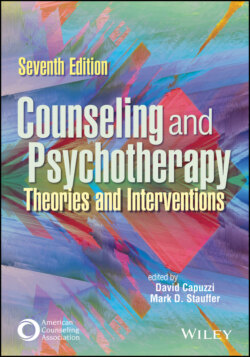Читать книгу Counseling and Psychotherapy - Группа авторов - Страница 26
DEFINITIONS AND DESCRIPTIONS OF THE HELPING RELATIONSHIP
ОглавлениеAlthough agreed-on definitions and descriptions of the helping relationship should be easy to find, this is not the case. Despite the importance of this relationship in the overall helping process, a perusal of textbooks and articles dealing with counseling and psychotherapy shows the lack of a common definition and that many theories and applications were developed by White, Western, and cisgendered men. Any definition should be grounded in awareness of the intersectional nature of identity and adapt the relationship to the client; for example, with trans and nonbinary clients, this should be affirming of nonconforming gender identity, ongoing minority stress, and resilience (see dickey & Singh, 2020). Rogers (1961), in his classical and seminal work On Becoming A Person, defined a helping relationship as one “in which at least one of the parties has the intent of promoting the growth, development, maturity, improved functioning, and improved coping with life of the other” (p. 39). Okun (1992) stated that “the development of a warm, trustful relationship between the helper and helpee underlies any strategy or approach to the helping process and, therefore, is a basic condition for the success of any helping process” (p. 14). Sommers-Flanagan (2015) noted that “each mental health counselor will inevitably display therapeutic relational factors in unique ways that may be difficult for other practitioners to replicate, because anything relational or interpersonal is alive, automatically unique, and therefore resists sterile descriptive language” (p. 100). Sommers-Flanagan went on to recommend that counselors implement core relational attitudes and behaviors based on evidence-based practice principles (see Sidebar 1.1).
It is easy to see the difficulty in categorically stating an accepted definition or description of the helping relationship, regardless of which of the aforementioned statements one chooses to embrace. Nevertheless, despite the differences, each carries with it directions and directives aimed at a single goal: the enhancement and encouragement of client change. The following definitive characteristics of the helping relationship embrace this goal and describe our conceptualization of this relationship:
